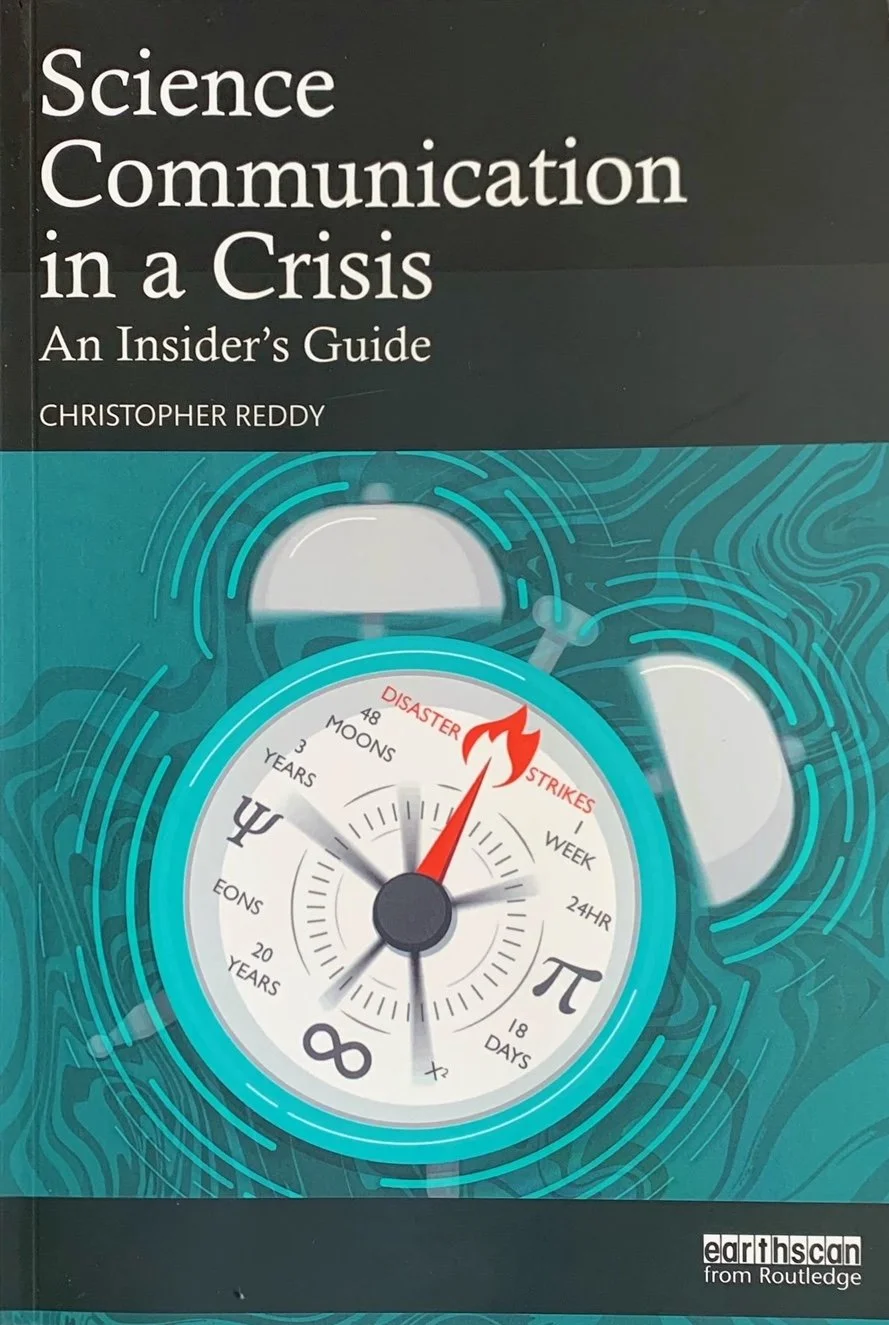New from Routledge Earthscan
Science Communication in a Crisis: An Insider’s Guide
A crisis can be a disaster, but it can also be an opportunity to make a difference.
Why would you pass that by?
Ocean chemist and veteran crisis responder Chris Reddy shares lessons learned in his 25-year career.
“highly recommended as an excellent source of information and inspiration for dealing with communicating science in a crisis, or any other time as well. Scientists as well as responders and decision-makers will certainly learn a thing or two…”
Ed Levine, International Spill Control Organization
“Given the many destructive environmental and medical crises that have transpired these past few decades… that necessitated scientific information and analyses being presented both to leaders and the general public in order for both solutions to be effected as well as public understanding to be achieved, this is a very timely book indeed.”
Johannes Riutta, The Well-read Naturalist
“Reddy’s book uses a series of high-profile disasters and emergencies to offer specialists advice on how to engage with the press, the public and other players in ways that illuminate the science rather than obscure it.”
Chris McGreal, The Guardian
“This is a textbook for young scientists to use as a template when interacting with the world outside their laboratory.”
David Gascoigne, “Travel with Birds”
“Science Communication in a Crisis: An Insider’s Guide” has an engaging conversational voice and should be ready by scientists, especially the more public-facing ones, journalists, communication officials, regulators, politicians and, for the matter, the general public”
Robert Whitcomb, “New England Diary”
“Not only is it effective at explaining the why and how of science communication, I believe it is an excellent resource for any creative professional who wants to learn better ways to communicate what they do.”
Chris Martin, “Getting work to work”
Reviews
Part 1: Meet the Characters
Public crises involve a complex cast of characters including responders, industry, media, and elected officials. The first key to effective crisis communication is understanding these stakeholders’ needs, goals, timelines, and measures of success.
Part II: The Crisis
Never scheduled and often chaotic, crises bring these players together in a situation that demands rapid decision making. Without the right approach to communication, efficient collaboration and cooperation can be derailed.
Part III: Lessons Learned
Know your audience, avail yourself of help from communications professionals, and more insights for scientists on the front lines.



